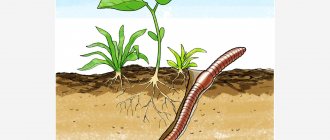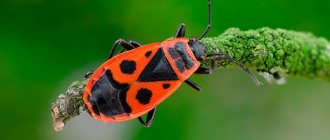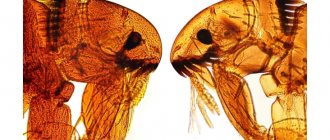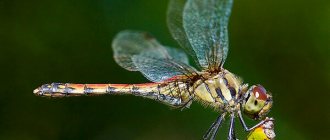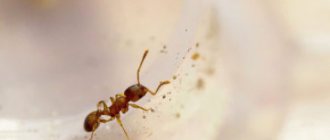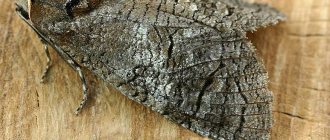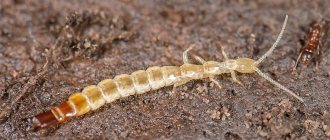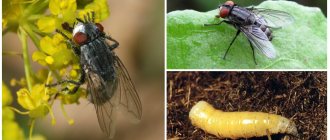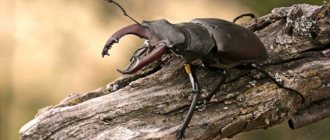- Wild animals
- >>
- Insects
During the warm season, you can meet many different insects on the street, each of which performs its own functions in the natural environment. Insects are constantly busy with something, most of them work directly for the benefit of people. One of these “hard workers” is the fireman beetle . This is a cute creature with a bright and memorable appearance. You can learn in detail about its role in nature and development features from this publication.
Origin of the species and description
Photo: Fireman Beetle
The fireman beetle is a medium-sized insect that got its name because of its original appearance, which includes red elements in its color. Quite often, this animal is confused with other beetles, called soldier bugs, onion rattles and bee moths by firemen. However, these are all completely different insects, with their own habits and external features.
Video: Fireman Beetle
Biologists also call firefighter beetles red-legged soft beetles. This is due to the bright burgundy color of the beetle’s legs and the absence of chitinous cover. The elytra of insects are very flexible and soft. Therefore, people believe that firefighters, like other representatives of soft-bodied animals, are more likely than others to be attacked by other animals and predators. But that's not true! These bugs can take care of themselves.
Interesting fact: Unfortunately, firefighting beetles have a very short lifespan. For this reason, such animals are able to reproduce within four weeks after their birth.
The fireman beetle is an insect of the soft-bodied family, order Coleoptera. It is quite easy to recognize this creature. His head is decorated with small antennae, very thin, resembling threads. These antennae are constantly in motion. There is a dark spot at the top of the head. It is by this that one can distinguish the fireman's beetle from other beetles. The body is rectangular, elongated. Adults rarely grow more than 1.5 centimeters in length. The belly is painted a bright burgundy color.
Firefighter beetles are usually found in gardens and are beneficial to humans. They effectively exterminate a huge number of insect pests. However, sometimes the population of such beetles grows very large and it becomes necessary to exterminate them. Firefighter beetles do not have to be poisoned, thereby polluting your own garden. Such insects can simply be collected by hand. But this method is relevant if the beetles have not yet had time to multiply very much. Otherwise, you can flavor the plants with a mixture of cheap tobacco and wood ash.
Does the soldier bug bite?
Very often, especially children or their concerned parents, seeing how these poor insects rush around the hands of their children in turmoil, they ask the question - can a soldier bite a child or an adult? No, fortunately, the sucking mouthparts of the soldier bug are not capable of biting through the delicate skin of a child or an adult.
But children should not be allowed to play with soldier bugs: firstly, these are living creatures, not toys, and secondly, they are real scavengers, and where this or that bug ran before and what it ate before is unknown, but after contact with a beetle, the child will definitely pull his fingers into his mouth, and thirdly, these beetles are quite adaptive, as soon as you bring one such cute miracle into your apartment or house, in an hour it will recover and begin to feed on your own plants.
We suggest you read: How to get rid of wireworms in the garden forever
Appearance and features
Photo: What a fireman beetle looks like
The fireman beetle is a rather striking representative of its family due to its very original appearance.
A firefighter can be distinguished by the following external features:
- original body color. The elytra are painted black, the abdomen and legs are brown or bright red. From above, the animal very much resembles a fire engine, from which it gets its name;
- average body size. The body has a slightly flattened shape and is distinguished by a soft structure. There is no strong, hard chitinous coating. The length usually does not exceed 1.5 centimeters. The top of the body is densely covered with hairs;
- retracted head There is a dark spot near the head. This is a characteristic feature of a firefighter. There are antennae on the head. They consist of eleven joints;
- soft wings and tenacious legs. The wings completely cover the back and are painted in a dark gray shade. The paws are colored red, they are quite strong and have small claws;
- presence of gender differences. In particular, females are always larger than males. Their pronotum is decorated with a symmetrical spot. This spot has an individual shape for each beetle. This makes them unique;
- presence of mandibles. The mandibles are slightly curved and very sharp. With their help, the beetle can pinch painfully. The mandibles are used by insects during hunting. The fireman beetle is a predator. It attacks small insects.
Signs of appearance
The appearance of a red soldier in your garden can be signaled by such phenomena as:
- drying of leaves of umbrella crops;
- the appearance of yellow spots on cabbage leaves;
- falling of buds and flowers;
- curling and drying of root crop tops;
- developmental lag of young seedlings;
- drying of berries.
The easiest way to find signs of damage is in crops such as cabbage (you should pay attention to large yellow spots on the leaves), coriander or dill (they begin to dry out quickly, since these varieties belong to the umbrella family), carrots and beets are inhibited in their development, leaf blades become deformed and wither.
Severely affected crops that cannot be saved must be removed and destroyed. They may contain larvae, which may soon infect surrounding crops.
Where does the fireman beetle live?
Photo: Firefighter Beetle in Russia
The appearance of the fireman's beetle always attracts the eye and arouses genuine interest among adults and children. Such an insect cannot be ignored during the warm season. It is usually found in gardens, orchards, and other places where garden plants grow. Their population is especially huge where raspberries and currants grow. Firefighter beetles don't particularly like attention. When a person approaches, they try to quickly leave their place.
Interesting fact: Firefighting beetles provide invaluable benefits. They exterminate a huge number of pests. But there is also harm from such insects. Firefighters can damage some types of fruit and vegetable crops and garden plants.
The firefighter beetle is a ubiquitous insect. It is found wherever there is a cold or temperate climate. But the main requirement of these beetles is the availability of food suitable for them. There are large numbers of firefighter beetles in Europe, Russia, Ukraine, Belarus, Georgia and many other countries.
Softworms reproduce quickly, but do not live long. These insects choose cultivated places to live. They can be found wherever there are plantings of fruit trees, raspberry bushes, currants, and gooseberries. They also prefer to live in vegetable gardens. Small populations of such insects are even welcomed by gardeners. This is not surprising, because firefighters help get rid of caterpillars, aphids, mosquitoes, midges and other pests.
Interesting fact: The fireman beetle is a safe and highly effective means of getting rid of cockroaches. In order for the Prussians to leave the living quarters, it is necessary to send several firefighters there and leave them for a while.
Now you know where the fireman beetle is found. Let's see what he eats.
Area
Gardens and vegetable gardens are the abode of soldier bugs. To build nests, insects climb into logs, tree trunks, and fences made of boards and pickets that are rotten from old age. At times, soldiers literally swarm on wood surfaces.
However, these corners are intended for pest beetles to rest. Red bugs hunt on young vegetation planted in personal plots. Soldiers cause enormous damage to gardeners -
gardeners, reducing productivity. Beds with cabbage, carrots, beets, fruit trees and shrubs are favorite places for pests to hunt.
What does soldier bugs eat?
Bedbugs are not picky eaters. When there is a shortage of food, they do not disdain carrion - they eat dead insects and vertebrates. When there is plenty of their favorite food, they are able to get enough of the juice of cultivated plants or weeds.
Having pierced the tissue of leaves and stems with their proboscis, the pests suck out the nutritious juice from them. A plant deprived of life-giving moisture stops bearing fruit and dies over time. Fruits and roots damaged by beetles are not suitable for consumption.
Red bugs leave oviposition on leaves and stems of vegetation, which prevents the larvae from dying from starvation. Tiny spiders gather in colonies and feed until they are full of plant nectar.
The soldier bug likes to feast on grape juice most of all. The damage caused by colonies is enormous. Therefore, gardeners, having noticed red bugs on their site, take urgent measures to destroy them.
What does the fireman beetle eat?
Photo: Red Beetle Fireman
The fireman beetle, despite its “softness,” is a rather formidable predator. This insect has very powerful jaws. It is these jaws that enable the beetle to deftly absorb small insects.
A firefighter's daily diet includes:
- aphids;
- small caterpillars;
- sleepy flies;
- larvae of various insects;
- small chafers (those species that feed on leaves).
Looking at the beetle's diet, it is easy to realize that it prefers to eat only those insects that are much smaller than its own size. In addition, firefighter victims often have a soft body structure. This predator cannot cope with too hard chitinous cover, even with the help of its powerful jaws. The beetle avoids such insects.
The fireman's beetle's hunting process begins in the air. He looks out for his next victim during the flight. Having found a suitable insect, the fireman lands in close proximity to it or even directly on the animal. Next comes the jaws. The fire beetle stabs them into its prey, releasing a toxic substance as it does so. One portion of poison can significantly soften tissue, so the further process of food absorption is quite easy.
In the larval stage, the firefighter beetle eats a little differently. Its diet consists mainly of small worms and centipedes. Beetle larvae find such food right in their habitat - in rotten stumps, in old trees. For this reason, it is highly not recommended to remove stumps and old wood from the garden. Firefighting beetles could be of great benefit in the future.
Features of character and lifestyle
Photo: Fireman beetle in nature
In appearance, the fireman beetle evokes only positive emotions. But its harmless appearance hides a real predator. Firefighter beetles spend almost all day hunting. They stalk their prey in flight, then grab it with their powerful jaws, bite it, and then consume it after exposure to venom. In warm weather, firemen can often be seen on various plants. There they not only bask in the sun, but can also have a snack. Insects gnaw only the fleshy parts of plants.
Firefighter beetles lead an active lifestyle. During the day they fly a lot, love to land and sit for a long time on plants, grass, flowers and fruit trees. These insects are attentive and have a good reaction. If any object approaches, they instantly fly into the sky. If it fails to fly away, the insect can pretend to be dead. To do this, it tucks its paws under itself.
Interesting fact: You should not try to pick up a fireman's beetle. He bites very painfully and releases a special odorous substance at his offender. The insect has sharp teeth and powerful jaws. The bite is quite painful.
Soft beetle larvae spend their day differently. They live on fallen leaves, soil or old wood. They overwinter under the roots of trees, buried deep in the soil or under foliage. The larvae have three pairs of legs, so they move easily and quickly. With the help of powerful jaws, they make their way, making tunnels in the tree. Little firemen feed on centipedes and worms. Outside the shelter, larvae appear very rarely. The only exception is the period of active snow melting. The larvae crawl out to escape the melt water.
Methods of fighting the Cossack
So, after you have found one or more signs of the appearance of this insect in your garden, you need to make sure that it is a soldier bug by finding one or more representatives in your area. This is very easy to do thanks to their color. After this, it is worth starting to destroy the pest.
Traditional methods
There is no point in immediately starting heavy artillery using pesticides. It’s better to start with softer traditional methods that are less likely to damage your agrocenosis.
Onion decoction (250 grams per bucket of water, the norm per square meter of soil infested with the pest), wood ash (200 grams per bucket), mustard powder (100 grams per bucket) and laundry soap (1 piece).
This solution should be sprayed on areas with infected plants 1-2 times a week.
Another effective way to combat this pest can be to plant some types of plants on the site, for example black cohosh (commonly called black cohosh).
Another effective way to exterminate bedbugs is to install a catching belt. A sticky strip wraps around the base of the tree trunk, where the soldier bug is most often found.
Natural enemies
The soldier bug has a gland on its back that produces an unpleasant-smelling secretion, a warning color and a bitter taste; therefore, it is not the most attractive delicacy, so a bird can only eat a bug very rarely.
Before you start fighting insect pests, you need to make sure that they are the ones causing harm to the area. The invasion of red bugs is indicated by:
- fallen buds and flowers of plants;
- cabbage leaves become covered with yellow spots and die;
- umbrella plants begin to dry out;
- The beet tops dry out and curl.
Pest control must begin when the first specimens are noticed, otherwise after a while there will be a lot of them. You can use chemicals or use proven traditional methods:
- Decoction of onion peels. Dilute a quarter liter of broth in a bucket of water. Spray infected plants with liquid.
- Wood ash. Dissolve 200 g of ash in a bucket of water. It is not only an insecticide, but also a good potassium fertilizer for plants.
- Mustard powder. Dissolve 100 g of mustard in a bucket of water. Spray the plants with the solution.
- Laundry soap. The bar is diluted in a bucket of water.
Social structure and reproduction
Photo: Insect fireman beetle
Soft cows mate only when warm weather arrives. The sun should warm the air and soil well. Typically, the period of procreation occurs in the summer - July. First, females and males split into pairs, then mate. After some time, the female lays eggs in the substrate. It should be soft and warm. Leaf litter on the soil, decaying plants, stumps, wood debris, and rotten branches are ideal for this.
To mature, eggs need some time - from fifteen to twenty days. The incubation period largely depends on the air temperature. After maturation, larvae are born. Outwardly, they very much resemble beads. The larvae are completely covered with hairs. They are small and have three pairs of legs. The larvae of fire beetles are very cute and interesting. The beetle larvae develop quickly, but at this stage they live for quite a long time.
Firefighter larvae, like adults, are predators. They eat small worms and centipedes as food. Also very interesting is the fact that larvae are characterized by digestion outside the intestine. How does this happen? Extraintestinal digestion involves the use of a special substance, poison. The larva injects this poison directly into the body of the victim, it almost instantly dissolves the tissues of the prey. Then the larva just needs to suck up the liquid food.
Closer to winter, pupation of larvae occurs. But only some of the larvae turn into pupae. The other part simply spends the winter in their shelter. In spring, the pupae turn into caterpillars and crawl out. People nicknamed the furry caterpillars “snow worms.” Then, with the onset of warmth, young firefighter beetles appear.
Natural enemies of firefighter beetles
Photo: What a fireman beetle looks like
The fireman beetle is a unique creature. Despite his modest size and very soft body structure, the firefighter successfully resists natural enemies. The thing is that in nature, the bright red color of the body indicates great danger. Predators, birds and other animals try to avoid such beetles, preferring easier and safer prey.
Why is the fireman beetle so dangerous to other animals? The red color of this insect indicates its high toxicity. It is so indeed. In case of danger, a fireman bites painfully and shoots a special poison at his offender. For many animals this poison can be fatal; for others it will cause a huge number of health problems.
Only occasionally are fire beetles attacked by birds of prey and some amphibians. They can also become prey for domestic animals. The most dangerous enemy of firefighters is man. When these beetles multiply rapidly, people resort to exterminating them using various methods. In the fight against firefighters, both humane and lethal methods are used. The thing is that too large a population of these insects can cause significant damage to plants, bushes and trees.
Attracting soft beetles
In order for firefighter beetles to become regulars and defenders of your site, there is no need to apply particularly complex measures. All natural farming activities are great for attracting these beneficial insects.
We just need to act as it happens in nature:
- Do not dig the soil on the site.
- Do not rake leaves under wintering trees and shrubs, and certainly do not burn them, losing not only useful organic matter, but also natural protectors.
- Do not use pesticides in the garden, which destroy all living things, and ultimately us and our loved ones.
Look at nature, act according to the scenario of harmony and mutual assistance outlined by it.
